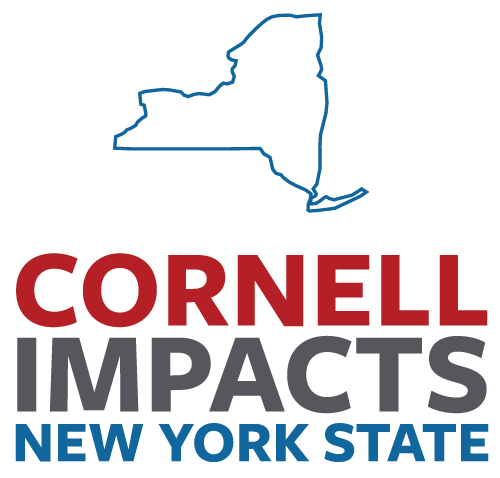Cornell Students, Onondaga Nation School Collaborate on Medicinal Garden Project Aimed at Revitalizing Indigenous Education Systems

A groundbreaking collaboration between Cornell University students and The Onondaga Nation School (ONS) kicked off this week with the installation of a medicinal garden on the school grounds in Nedrow, New York. The project brings together native plants with cultural significance to the Onondaga people, such as sweetgrass, common elderberry, and wild plum trees, nodding onion, wild ginger, and strawberries.
The 16 different species incorporated into the garden have culinary, medicinal, and ceremonial uses for the Haudenosaunee confederacy of six Nations including Onondaga. The garden is part of a holistic outdoor education space that was designed to revitalize Indigenous education systems by incorporating knowledge from and about the community into the school's curriculum.
"We wanted to have a more holistic, outdoor education space that will allow teachers to revitalize Indigenous education systems and form a bridge to Western education," said Spencer Lyons, a chief on the Onondaga Nation Council. "It's a big goal for the Onondaga Nation School, to make sure we can implement as much of our teachings and ideas and identity into our education system."
More than 20 Cornell students from the Sustainable Landscapes team were involved in the installation of the garden, which was spearheaded by civil engineering major Gracekelly Fulton. The students consulted with ONS, starting with a list of available native plants and design ideas that they presented to the school community before the result of the year-long collaboration came to fruition.
"It was really rewarding to see how including them in the process of the installation helped them to feel invested," said Hernandez, a plant science major and co-lead of the Sustainable Landscapes team. "Seeing their excitement and engagement, then seeing the children learn the process of planting – that was really rewarding."
The Onondaga Nation School serves Indigenous students in prekindergarten through eighth grade, incorporating the teaching of the Onondaga language and culture, which aligns with the school's goal of providing hands-on, project-based opportunities for students. According to John Gizzi, who facilitated numerous community meetings for the project, the medicinal garden will be a key component of project-based learning.
"It was fortuitous because one of the initiatives we are working on this year is project-based learning," he said. "The garden is something the students can study by literally walking 80 or 90 yards northwest of our north door. They can experience the plants, study them, and at the same time, those plants are a part of their community and invite the community in."
A continuous legacy between Onondaga Nation School project initiated by Cornell University.
Cornell students reflect on meaningful collaboration with ONS.
For the future generations, the Haudenosaunee culture will continue to thrive.
